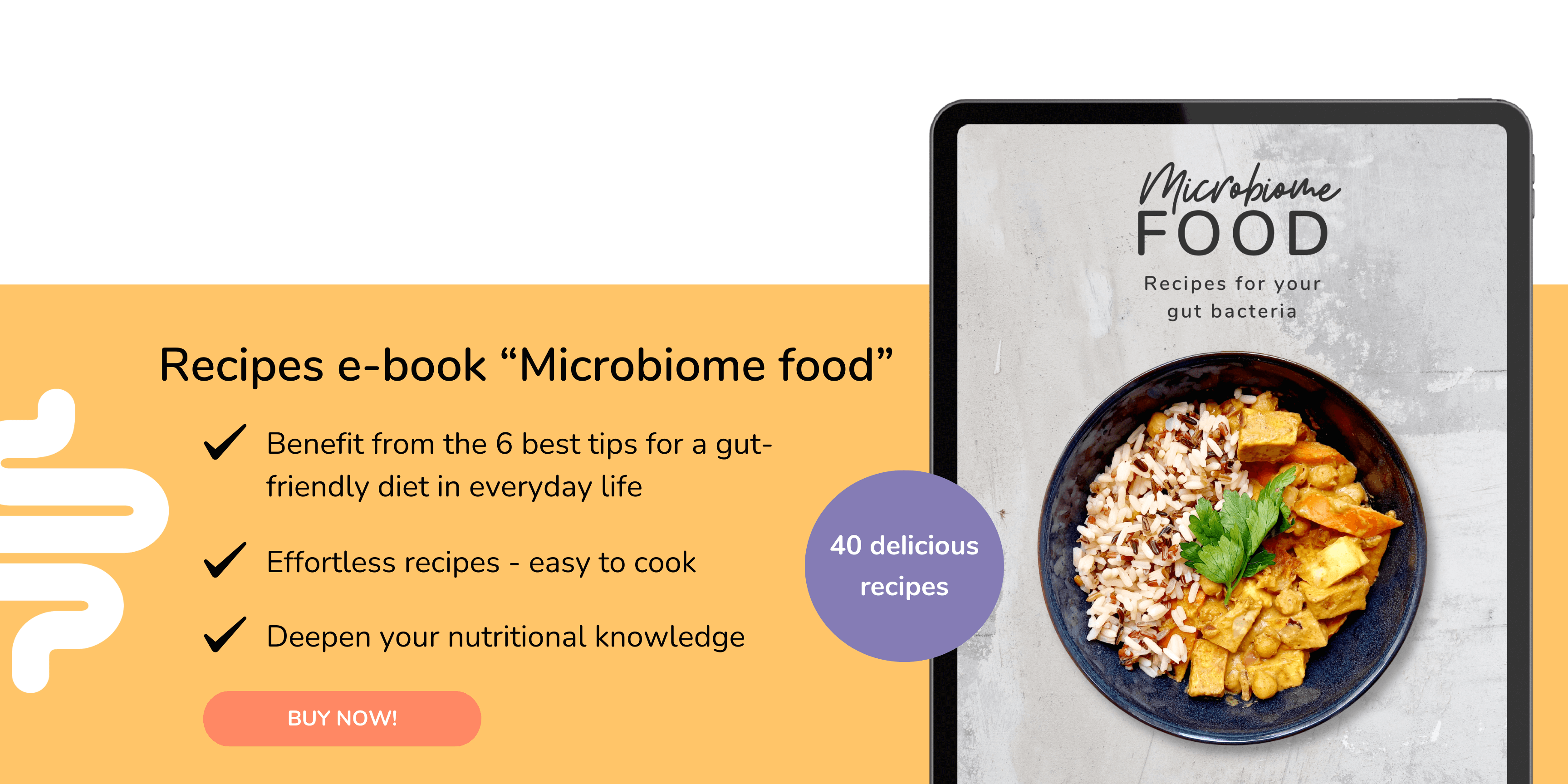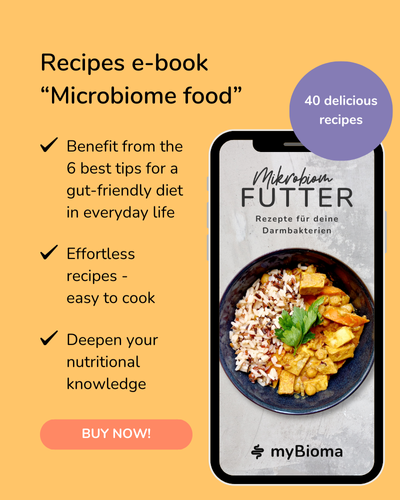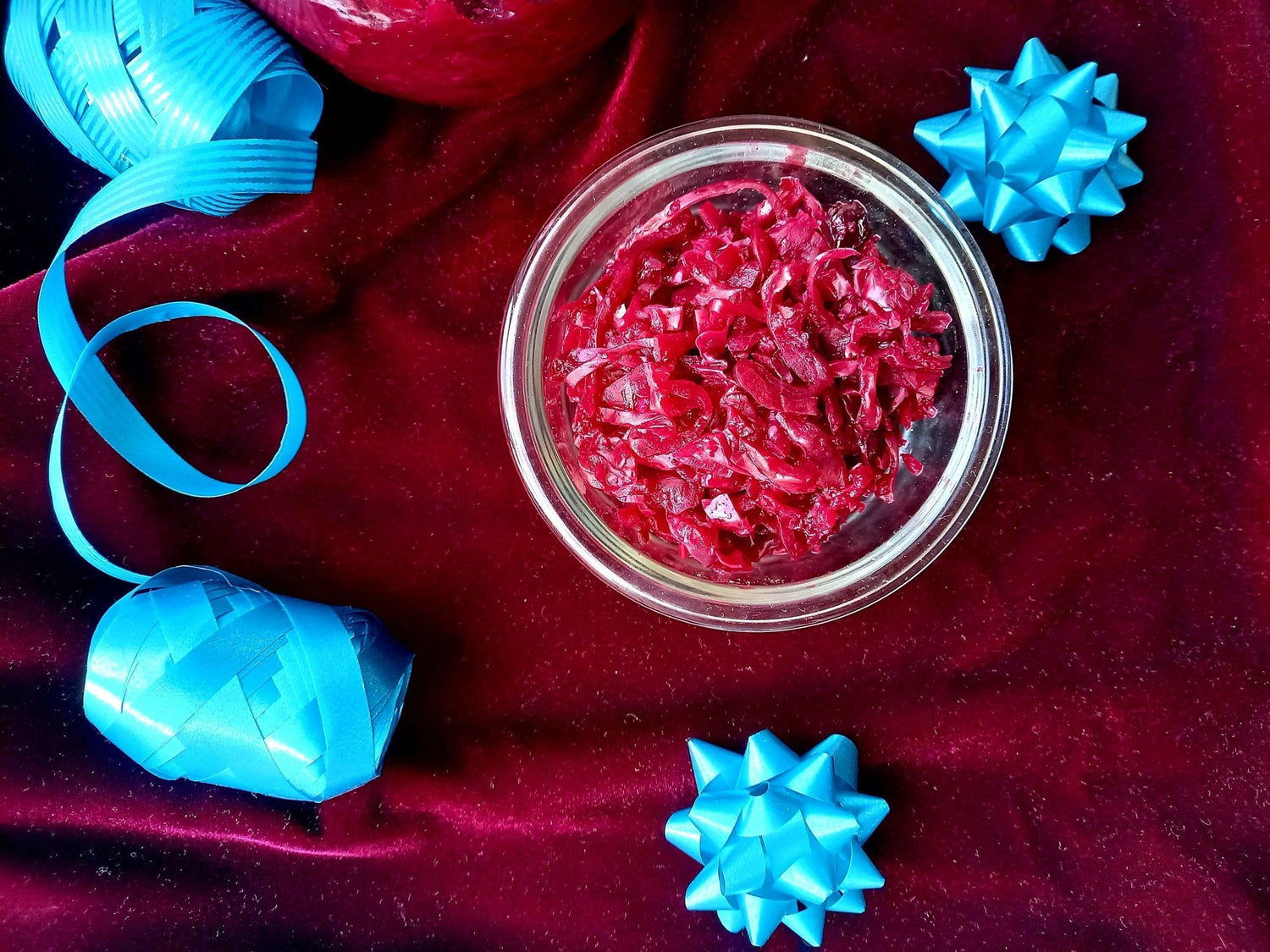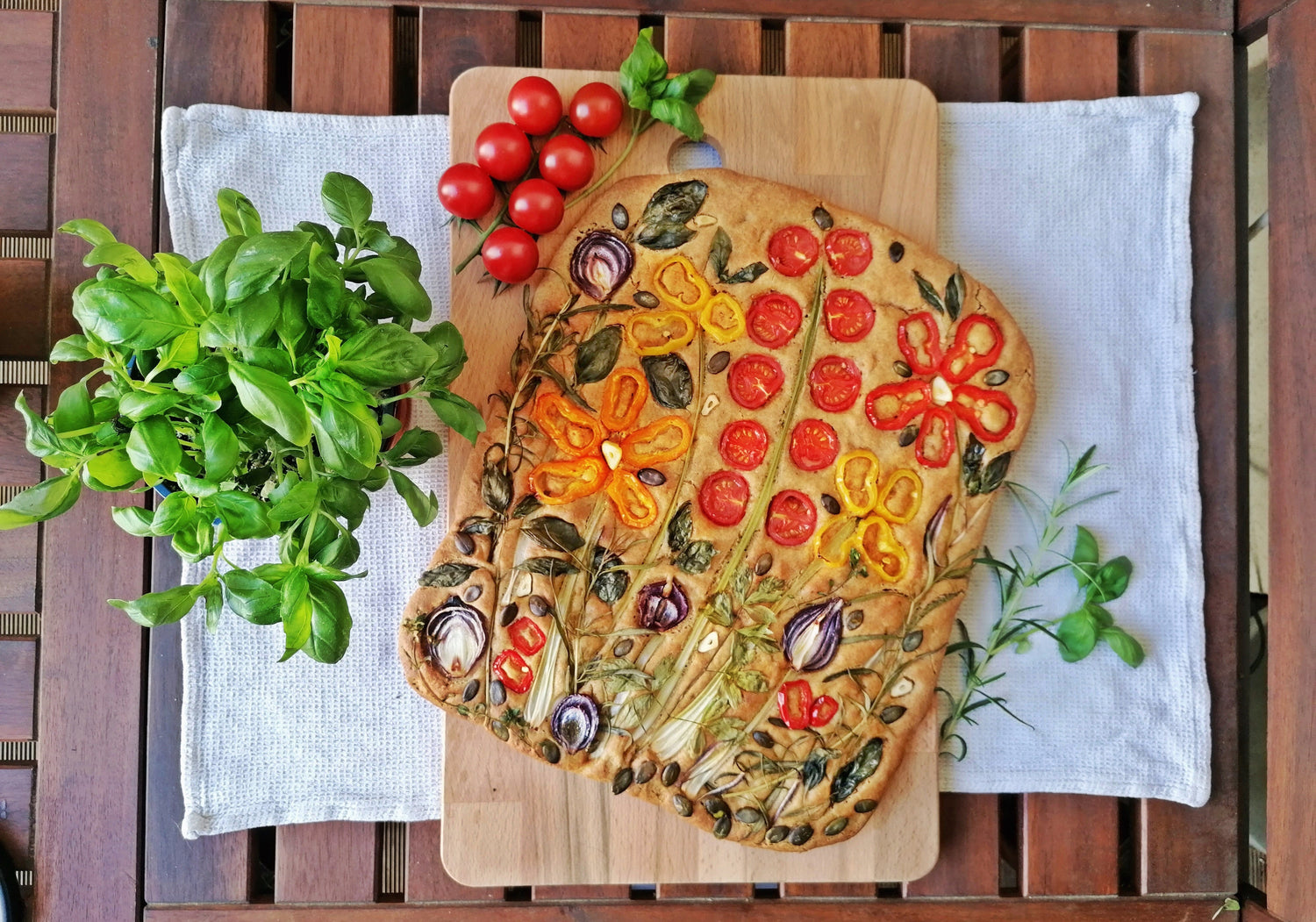Are you still looking for a cake recipe for the Christmas or Advent season?
Maybe we've got something for you, because you can almost only win with brownies!
Brownies - the favorite of all guests!
Brownies are a real all-rounder and very popular with most people. We refined our brownies with wonderful, Christmas-tasting spices. Because who can resist the taste of gingerbread and chocolate?
The brownies are perfect as a dessert for guests, for your loved ones or as a treat for yourself.
With our recipe, the brownies are quick to make, easy to prepare and taste great for both young and old. They are also gut-friendly, contain no refined sugars or sugar substitutes, are vegan and gluten-free.

The brownies will delight young and old alike!
Gingerbread Brownies – a Christmas treat
Ingredients
Brownies
- 250ml oat milk
- 1 tbsp apple cider vinegar
- 2 tbsp flax seeds
- 50g dates (pitted)
- 120g ground almonds
- 120g buckwheat flour
- 120g baking cocoa
- 3 tbsp gingerbread spice
- 1 heaped tablespoon of baking powder
- 90g yogurt (natural yogurt / unsweetened soy yogurt)
- 50g coconut oil
- 100ml maple syrup
- 150ml hot water
- 120g apple pulp (unsweetened)
- Peel of an ORGANIC orange
- Zest of half an organic lemon
Cream
- 2 avocados
- 180g yogurt (natural yogurt / unsweetened soy yogurt)
- 3 tsp psyllium husks
- 40g cocoa
- 80g maple syrup
- 1 tsp gingerbread spice
- some peel from an organic orange
Preparation
Mix the oat milk with the apple cider vinegar and set aside. Mix the flaxseeds with 3 tablespoons of water and pour hot water over the dates in a separate bowl. Allow both to swell or soak for about 10 minutes.
Line a square sheet cake tin (approx. 18x 21 cm) with baking paper.
In a mixing bowl, mix the ground almonds, buckwheat flour, cocoa, gingerbread spice and baking powder together well.
In the next step, drain the water from the dates and add the maple syrup. Puree the whole thing well.
Now add the date-maple syrup, the yogurt, the coconut oil, the flax seeds, the oat milk-apple cider vinegar mixture and the hot water to the dry ingredients. Lastly, add the applesauce to the bowl.
Using a grater, grate the peel of the orange and half a lemon into the bowl with the dough.
The ingredients are mixed with a hand mixer, not for too long, and poured into the baking pan.
Now the brownies have to bake at 180°C for about 60 minutes.
After baking, let the brownies cool thoroughly and only then remove them from the baking pan. Otherwise there is a risk that they will fall apart.
For the cream, all the ingredients are pureed together and then added to the cooled cake.
The brownies taste best after they have rested for a few hours.
How long do the brownies last and where do I store them?
The brownies can be stored in the refrigerator for several days.
Baked too much? You can also freeze the brownies (without cream) and defrost them again if necessary. The cream tastes best when it is freshly prepared.
You can find this recipe and many other wholesome, gut-friendly dishes and desserts in our “Microbiome Food” recipe book.
You can find the direct link here: Microbiome food recipes for your intestinal bacteria

The brownies are the right dessert for a cozy Advent Sunday or Christmas holiday.
How healthy are the brownies?
The benefits of the ingredients for your intestinal health
Buckwheat: buckwheat is gluten free and therefore also compatible with people with celiac disease or gluten sensitivity. Buckwheat can also help lower bad cholesterol levels (LDL cholesterol) in the blood and only causes blood sugar levels to rise slowly after consumption. This way, cravings can be prevented. Buckwheat is a good one Source of fiber and rich in B vitamins , vitamin K , potassium , calcium , iron and Magnesium . (1)
Almonds: The flavonoid contained in almonds Proanthocyanidin can stimulate fat cells to release insulin and thus lower blood sugar levels. Additionally contains almonds Antioxidants that can bind free radicals and at the same time support metabolism. They also minimize the risk of irritation to the digestive tract. In addition, almonds contain a lot Vitamin E and fiber . (2)
Avocados : contain a lot simple – and polyunsaturated fatty acids . Especially oleic acid, which can have anti-inflammatory and anti-cancer effects. It can have a mitigating effect on joint inflammation. Blood lipids and cholesterol levels can also improve. Fatty acids are also important for our brain and mental health. Avocados can improve our mood and help with depression by preventing the formation of homocysteine. Homocysteine is an amino acid that is produced from time to time in the body and reduces the production of our happiness hormones. Homocysteine can also trigger inflammation. What you might not believe at first glance: there are a lot of avocados in them Fiber .
However, avocados should not be eaten during pregnancy or breastfeeding as they can have a negative effect on the mammary glands. (3)
Cocoa: Cocoa contains many so-called bioactive ingredients that can counteract inflammation, oxidative stress, high blood pressure, obesity, sugar and lipid metabolism disorders. (4) In addition, cocoa contains many Antioxidants and Minerals that can ensure healthy bones and thus reduce the risk of osteoporosis. Cocoa also contains the happiness hormones Serotonin and Dopamine and can thereby improve our mood. (5) Those contained in cocoa Flavonoids also reduce the risk of cardiovascular diseases. (6)
If you try the recipe, please share it on your social media account and tag us @mybioma.
Microbiome food – recipes for your intestinal bacteria
Diet forms the basis of a healthy microbiome. If you give your intestinal bacteria the right food, you will contribute to a healthy balance in your microbiome and help you feel better. In the myBioma recipe book you will find a selection of 40 gut-friendly recipes with additional nutritional knowledge. You can find more information here: Microbiome food – recipes for your intestinal bacteria .

Enjoy these wonderfully festive brownies.
References
- Huda N, Lu S, Jahan T, et al. Treasure from garden: Bioactive compounds of buckwheat. Food Chem. 335, 127653 (2021). Doi: 10.1016/j.foodchem.2020.127653
- Rowland I, Gibson G, Heinken A, Scott K, Swann J, Thiele I, Tuohy K. Gut microbiota functions: metabolism of nutrients and other food components. Eur J Nutr. 2018 Feb;57(1):1-24. doi: 10.1007/s00394-017-1445-8 . Epub 2017 Apr 9. PMID: 28393285 ; PMCID: PMC5847071.
- Mohammed S. G, Qoronfleh M. W. Vegetables. Personalized Food Intervention and Therapy for Autism Spectrum Disorder Management. Advances in Neurobiology. Springer 24, 225-277 (2020). Doi: https://doi.org/10.1007/978-3-030-30402-7_9
- Jaramillo Flores ME. Cocoa Flavanols: Natural Agents with Attenuating Effects on Metabolic Syndrome Risk Factors. Nutrients. 2019 Mar 30;11(4):751. doi: 10.3390/nu11040751
- Seem SA, Yuan YV, Tou JC. Chocolate and chocolate constituents influence bone health and osteoporosis risk. Nutrition. 2019 Sep;65:74-84. doi: 10.1016/j.nut.2019.02.011
- Steinberg F.M., Bearden M. M., Keen C. L. Cocoa and chocolate flavonoids: Implications for cardiovascular health. Journal of the Academy of Nutrition and Dietetics 103, 215-223 (2003). Doi: 10.1053/jada.2003.50028
- Österreichische Gesellschaft für Ernährung. Vitamine/Mineralstoffe. ÖGE (2019). https://www.oege.at/bildung-information/nahrungsinhaltstoffe-vitamine-mineralstoffe/ [04.11.2021]







